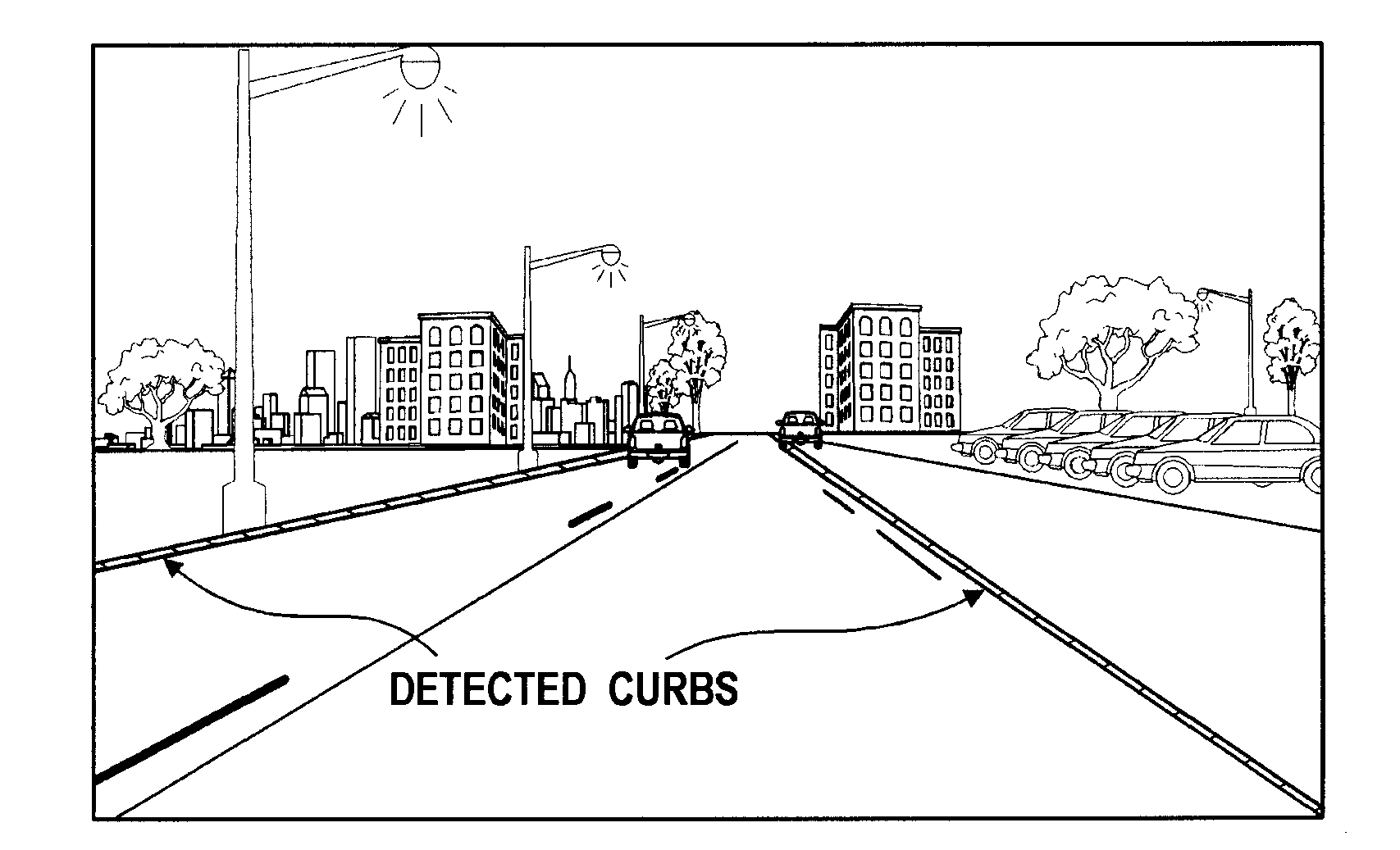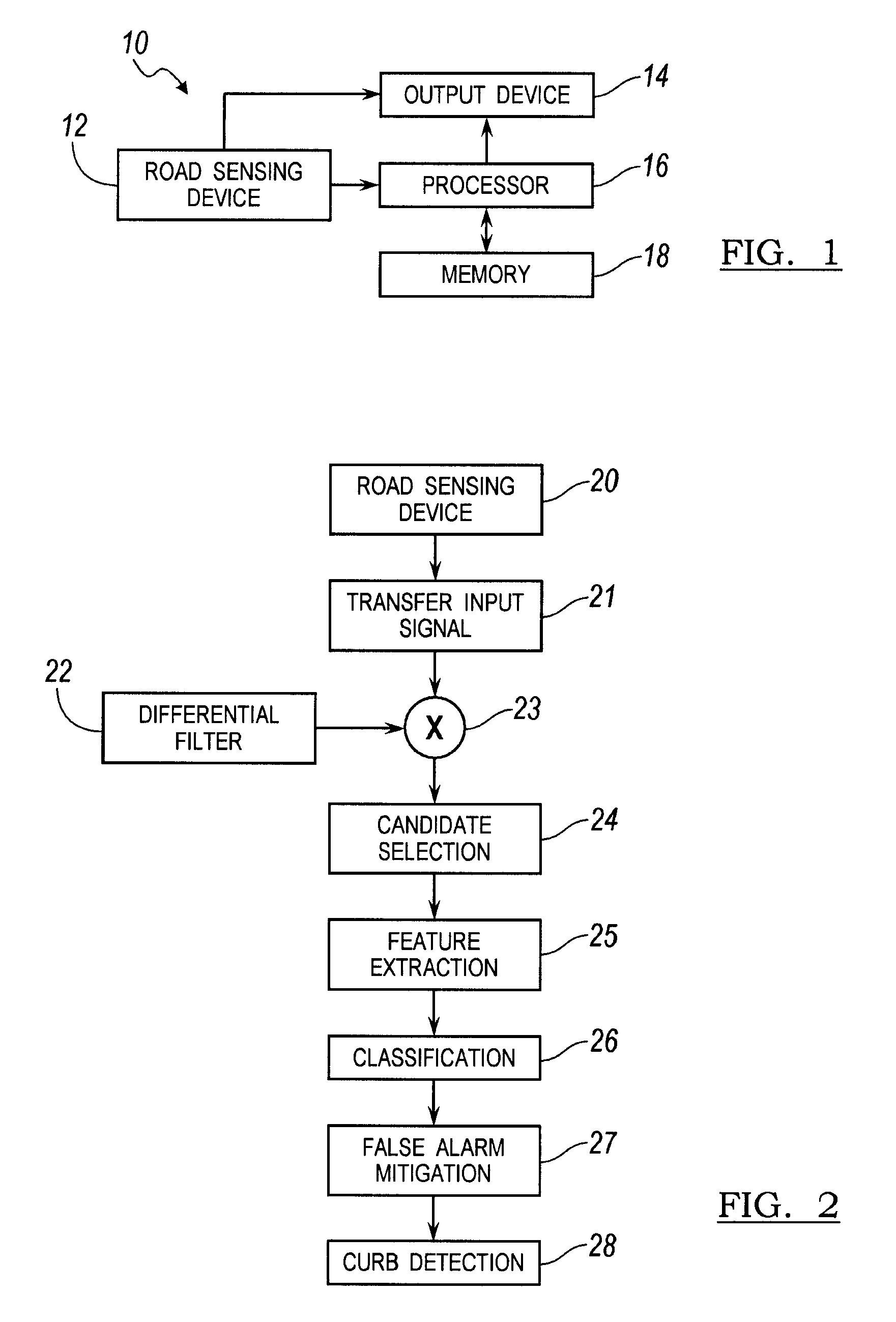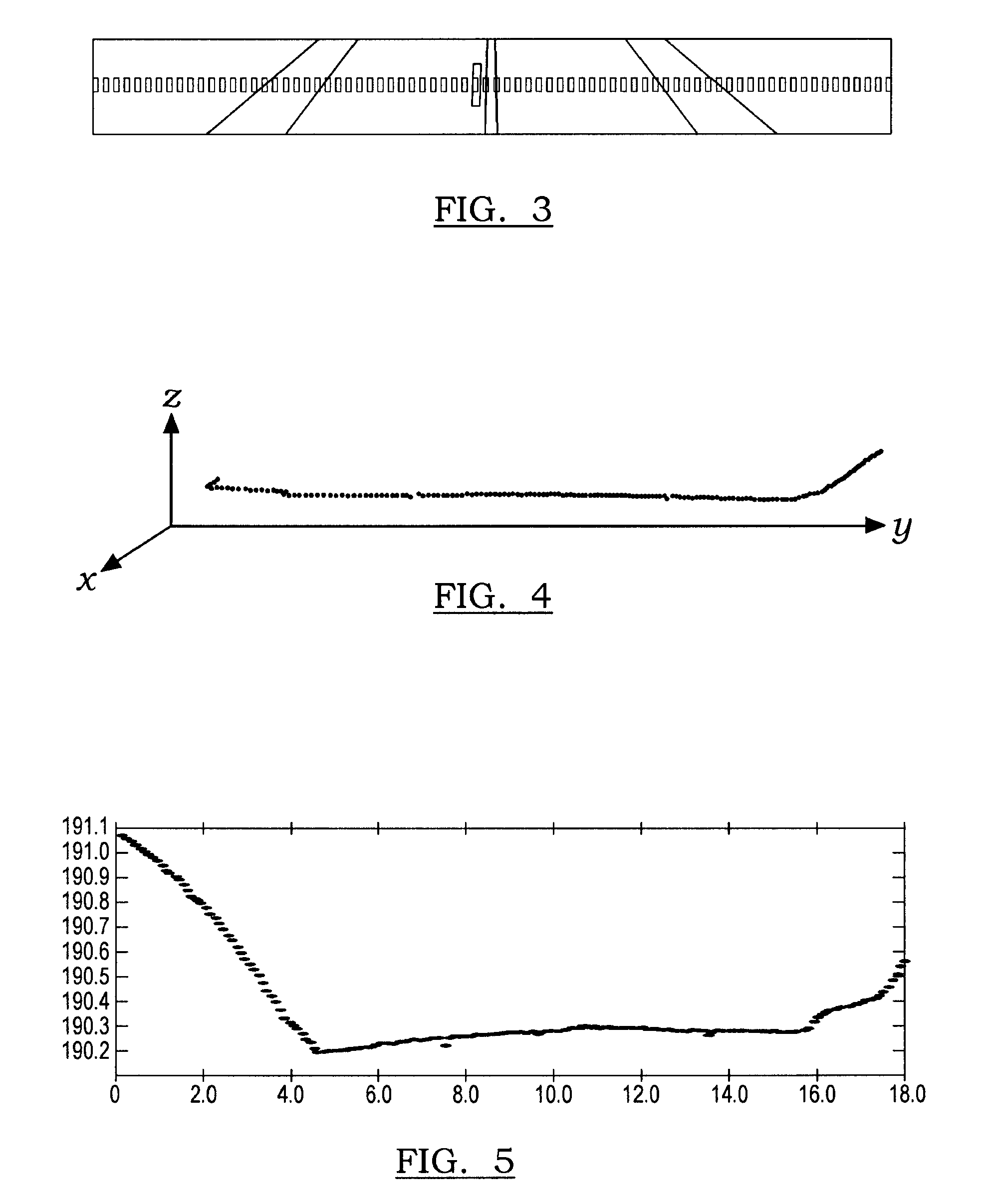Road-edge detection
a detection field and road edge technology, applied in the field of road detection, can solve the problems of vision-based systems being susceptible to incorrectly distinguishing road-side edges such as curbs from shadows from trees, buildings, other environmental conditions, and vision-based systems being typically challenged, and achieve the effect of reliable detection performance and fast processing speed
- Summary
- Abstract
- Description
- Claims
- Application Information
AI Technical Summary
Benefits of technology
Problems solved by technology
Method used
Image
Examples
Embodiment Construction
[0016]There is shown in FIG. 1 a light-based sensing system 10 for detecting road-side edges of a road. The light-based sensing system 10 is used to detect road side edges in the road of the driven vehicle. The light-based sensing system 10 is used in an autonomous steering system for road detection. Alternatively, the light-based sensing system 10 may be used for driver awareness for a vehicle driven by a driver to enhance visibility during the daytime or nighttime when road visibility is poor or during other instances when visibility enhancement is warranted.
[0017]The light-based sensing system 10 includes a road sensing device 12 including, but not limited to, a Light Detection and Ranging (LIDAR) optical sensing technology device. The LIDAR device measures the properties of scattered light to determine certain characteristics such as range to a target or other information.
[0018]The light-based sensing system 10 further includes a processor 16 for receiving and processing the dat...
PUM
 Login to View More
Login to View More Abstract
Description
Claims
Application Information
 Login to View More
Login to View More - R&D
- Intellectual Property
- Life Sciences
- Materials
- Tech Scout
- Unparalleled Data Quality
- Higher Quality Content
- 60% Fewer Hallucinations
Browse by: Latest US Patents, China's latest patents, Technical Efficacy Thesaurus, Application Domain, Technology Topic, Popular Technical Reports.
© 2025 PatSnap. All rights reserved.Legal|Privacy policy|Modern Slavery Act Transparency Statement|Sitemap|About US| Contact US: help@patsnap.com



